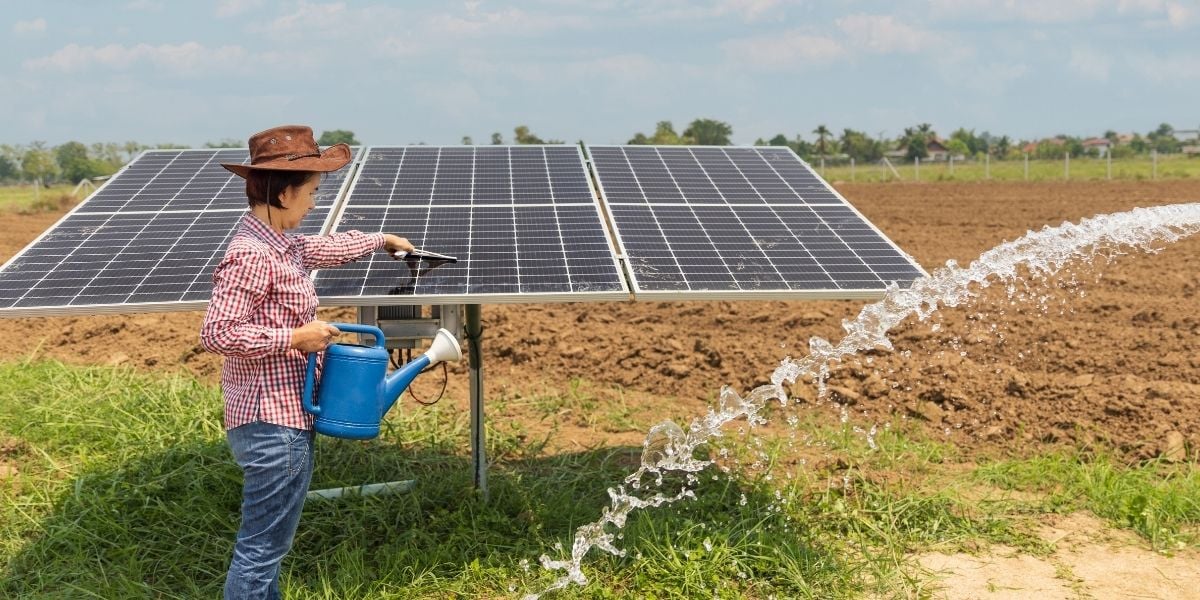How Satellite IoT Enables Reliable Solar Monitoring In Remote Areas
27 Jun 2025

Solar power may be self-sustaining, but without reliable monitoring, performance can slip unnoticed. In remote and off-grid locations, where access is limited and conditions are tough, visibility is everything. That’s why satellite IoT is fast becoming the preferred solution for maintaining solar performance in the most isolated parts of the world.
What is satellite IoT?
Satellite IoT refers to using low-power, compact IoT devices that connect directly to satellites orbiting the Earth. There is no need for towers, cabling, or terrestrial infrastructure. These devices gather data from sensors on the ground and transmit it via satellite to the Cloud for analysis—using off the shelf AA batteries and lasting for 5–10 years in the field. It’s a simple but powerful idea—connect anything, anywhere.
For remote solar arrays and home installations in rural communities, mountain regions, island resorts, and isolated research facilities, traditional connectivity options often fall short. Terrestrial cellular coverage can be patchy or non-existent and installing fibre or wireless infrastructure can be cost prohibitive and impractical. Remote solar monitoring through satellite IoT makes it possible to oversee these installations from virtually anywhere on the planet.

How solar remote monitoring through IoT works
A typical remote solar monitoring setup requires a secure and resilient data pathway from sensor to the Cloud, and back again:
Sensor → Satellite → Ground Station → Cloud
1. Sensor — Installed on the solar infrastructure, these sensors track vital performance data like voltage, current flow, ambient temperature, battery status, and inverter health.
2. Satellite transmitter — This onboard module collects and transmits the sensor data directly to a satellite passing overhead. When the satellite is overhead, the Myriota Module wakes up and transmits messages. Transmissions are short, efficient and designed to consume minimal power.
3. Satellite relay — Once received, the satellite passes the data to a ground station. From there, it’s securely pushed to cloud infrastructure for processing and storage.
4. Cloud dashboard — End users log into an intuitive interface to review performance, monitor trends, receive alerts, and trigger maintenance as needed. This enables proactive management from anywhere.
A distinctive feature of Myriota’s technology is its bi-directional communications capability—meaning data can flow both from the device to the Cloud, and from the Cloud back to the device. This allows you to remotely reconfigure the system or turn it on and off directly from the Cloud.

Satellite IoT vs Terrestrial IoT
While terrestrial and satellite-based IoT networks serve the same ultimate purpose, they differ greatly in how they operate and where they shine.
● Coverage — Terrestrial IoT connectivity solutions such as LoRaWAN, WIFI, and traditional cellular networks, rely on ground-based towers, restricting coverage to populated or networked areas. By contrast, satellite IoT provides truly global coverage over land, sea and the 85% of the world where cell towers don’t reach.
● Power Management — Effective power management is critical for IoT devices, which are often deployed remotely and can be expensive or dangerous to service in-field. Years of reliable and autonomous battery-powered operation is essential yet difficult to obtain on terrestrial cellular networks, where distance from tower and roaming between networks and towers can increase consumption unpredictably.
● Cost — For urban installations, cellular is often cost-effective due to existing coverage. However, in rural or remote deployments, extending infrastructure costs can quickly outpace the benefits. Satellite IoT flips that equation with low monthly data costs without the overhead.
Considerations for monitoring solar systems via the IoT
● Latency — Satellite IoT is a flexible connectivity option, offering the ability to tune latency based on your application needs and budget. Many remote monitoring applications, including solar monitoring, do not require real-time reporting and cannot deliver ROI at the price point of these services. Luckily, there are cost-effective, low latency satellite options such as Myriota’s UltraLite service, which can provide reporting multiple times a day at an extremely affordable cost.
● Data packet size — With the right partner, satellite IoT is extremely cost effective, and particularly so if you can design your data needs to minimise the size and rate of data transmissions. For solar monitoring, connectivity costs can be minimised by performing a level of data processing at the edge and sending small bursts of critical data, such as power output or fault alerts, rather than raw data streams or detailed diagnostics. Engineers should focus on the most valuable data points and optimise payload size accordingly.
● Power trade-offs — While devices are exceptionally power-efficient, the frequency of transmissions and the number of sensors connected will influence battery life. A system sending hourly updates will consume more power than one sending daily summaries.
Solar power monitoring system using IoT — conclusive thoughts
With ultra-low power demands, cost-effective data plans and the ability to connect anywhere on the planet, satellite-based IoT connectivity is a technology that’s already changing the game for utility companies and solar energy operators across the world.
For developers and integrators considering such solutions, Myriota offers more than a decade of experience in delivering high security, power efficient direct-to-satellite IoT solutions through their UltraLite™ connectivity service. UltraLite™ offers the most extreme in low cost, energy efficient, and secure IoT connectivity.
The addition of the new HyperPulse™ 5G standards-based network, announced in February, builds on this knowledge, expanding their extensive infrastructure with a constellation of satellites in geostationary (GEO) orbit and L-Band frequency.
Built in partnership with Viasat, a global leader in satellite infrastructure, HyperPulse™ expands Myriota’s solution base to deliver connectivity designed for sensing, tracking, and remote management with standards compatibility, large bandwidth support, and regular, near-real time reporting.
In addition to its network offerings, Myriota has a range of developer, edge device, and partner solutions to accelerate prototyping and market entry for its customers. These include:
- Myriota Module: A low-cost, low-power module for building UltraLite™-ready solutions
- Myriota Dev Kit: A ready-to-use toolkit for rapid prototyping and field testing in remote environments
- Myriota FlexSense: A flexible and highly-featured IoT edge enabler compatible with a huge range of sensor types.
The HyperPulse™ Developer Toolkit and a range of edge solutions will be available for purchase from Q4 2025.
Beyond solar monitoring, Myriota supports critical IoT applications across a wide range of industries, including water monitoring, smart agriculture, and government. Book a free consultation with our experts today to discover how our technology can elevate your business’s remote monitoring capabilities and drive smarter, more reliable operations—no matter where you are.
